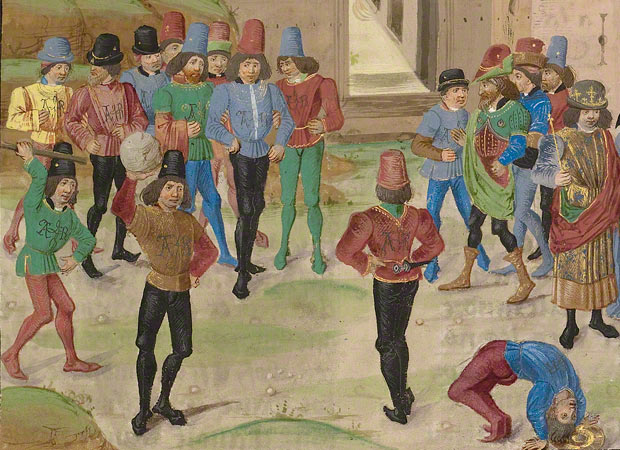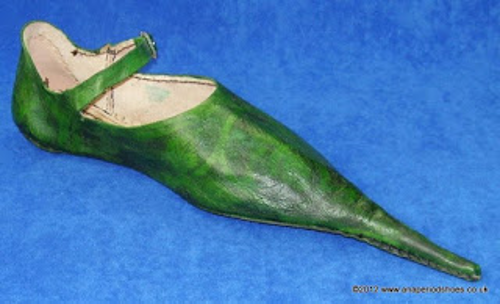Sumptuary laws
How we clothe and adorn our bodies has always been a public concern. Every religion has something to say about proper or improper dress or headwear or hairstyles. Every state has regulations regarding the outward show of a decent citizen. The outlandish garb of the 21st century against we oldsters impotently rail have their antecedents in every culture. Inevitably, the more outré clothing has been fingered as the cause of national calamities.
Pierre Lacroix, a writer of the 19th century – an era which produced such crimes against fashion as the bustle, tartan trousers, and leg-o-mutton sleeves – here rants against the dandies of the 14th century.
“We must believe that God has permitted this as a just judgment on us for our sins,” say the monks who edited the Grande Chronique de St. Denis, in 1346, at the time of the unfortunate battle of Crecy, “although it does not belong to us to judge. But what we see we testify to; for pride was very great in France, and especially amongst the nobles and others, that is to say, pride of nobility, and covetousness. There was also much impropriety in dress, and this extended throughout the whole of France. Some had their clothes so short and so tight that it required the help of two persons to dress and undress them, and whilst they were being undressed they appeared as if they were being skinned. Others wore dresses plaited over their loins like women; some had chaperons cut out in points all round; some had tippets of one cloth, others of another; and some had their headdresses and sleeves reaching to the ground, looking more like mountebanks than anything else. Considering all this, it is not surprising if God employed the King of England as a scourge to correct the excesses of the French people.”
Other contemporary writers, and amongst these Pope Urban V and King Charles V, inveigh against the poulaines, [long-toed shoes] which had more than ever come into favour, and which were only considered correct in fashion when they were made as a kind of appendix to the foot, measuring at least double its length, and ornamented in the most fantastical manner. The Pope anathematized this deformity as “a mockery of God and the holy Church,” and the King forbad craftsmen to make them, and his subjects to wear them. All this is as nothing in comparison with the profuse extravagance displayed in furs, which was most outrageous and ruinous, and of which we could not form an idea were it not for the items in certain royal documents, from which we gather that, in order to trim two complete suits for King John, no fewer than six hundred and seventy martens’ skins were used.

